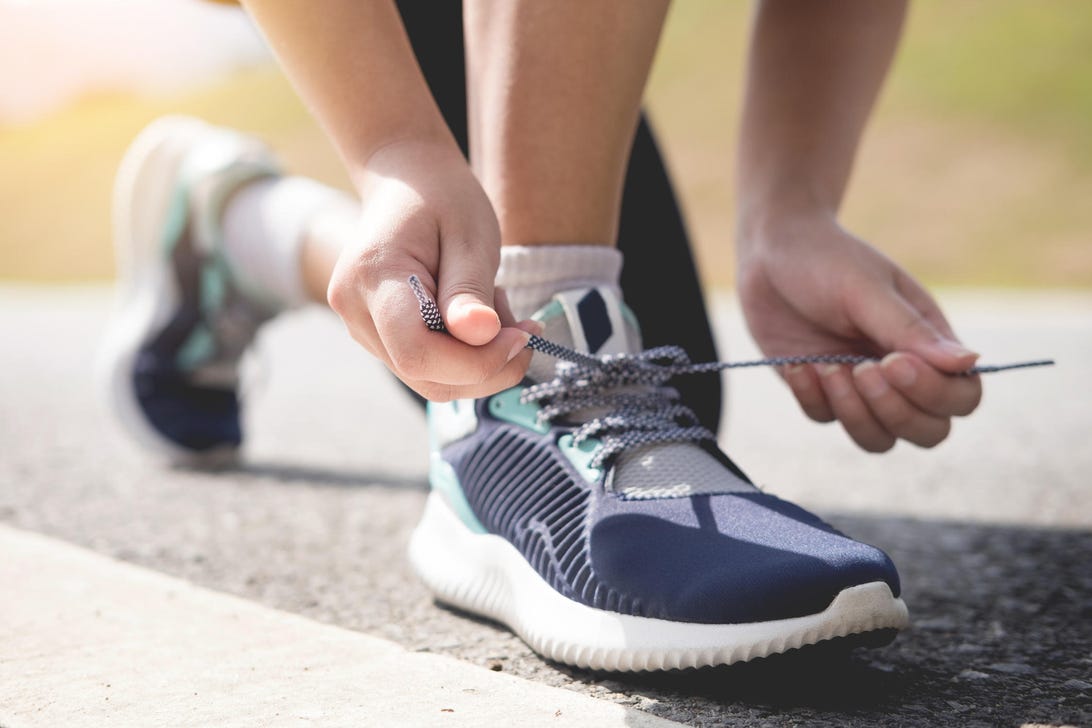
Whether you’re training for a 5K or an ultramarathon, you’ll need a trusty pair of running shoes that will take you to the finish. Part of a successful training cycle and pain-free race day is making sure your running shoes aren’t too worn out. Studies show that worn-down shoes cause runners to change their posture and gait (their manner of running), which can lead to injuries down the line. This is largely due to a decline in the shoes’ shock-absorption abilities.
Sometimes it’s hard to give up a favorite pair of old shoes, but when they start to hurt more than they help, remember it’s for the sake of your health.
How long do running shoes last?
It’s not a matter of time, but a matter of miles — though you can do a little math and figure out how many months your shoes will last you.
Experts recommend you replace your running shoes every 500 to 750 kilometers. That’s roughly every 300 to 500 miles, which equates to approximately four to six months for someone who runs 20 miles a week. Brooks, a top brand of running shoes, recommends that you replace its lighter-weight or minimalist designs every 250 to 300 miles.
The rate at which shoes wear down varies drastically for every person, so 300 to 500 miles might not be accurate for everyone. For example, someone who runs on rough terrain or very hot asphalt might find that their shoes wear down quicker than someone who runs on smooth, shaded trails.
In addition to your environment, your weight, foot strike and running mechanics also influence the life of your shoes: A 100-pound runner with a near-perfect stride will get many more miles out of a pair of shoes than a 200-pound runner who overpronates.
Related: How to choose the perfect running shoes
When to replace your running shoes
If you track your runs with a fitness watch or other GPS device, you’ll know when you hit that 300- to 500-mile mark. If you don’t, it’s much harder to know when the time comes for a new pair of trainers. Looking out for these five signs can help:
1. You have new aches and pains. If you notice that your ankles, knees or hips get more achy after a run, it might be time to get a new pair of shoes. New, unexplained aches and pains can mean that the cushioning in your shoes is worn down.
2. Your feet get extra sore after a run. When you start to notice soreness and stiffness in the bottoms of your feet, especially your arches, it might mean that your shoes have worn down to a shape that no longer fits your feet properly.
3. The treads are worn out. The treads, or flex grooves, on your shoes are an important part of their anatomy. If they’re worn out, your shoes won’t roll in sync with the natural stride of your feet.
4. The midsole feels tough. This is a telltale sign that you need new running shoes: If you press your thumb into the midsole and it feels tough rather than slightly spongy, it means the cushioning has compressed and no longer offers proper support.
5. You keep getting blisters or brush burn. If your once-trusty shoes rub your skin the wrong way, it probably means they’ve altered shape during your many miles — time for a new pair.
More shoes for runners
The information contained in this article is for educational and informational purposes only and is not intended as health or medical advice. Always consult a physician or other qualified health provider regarding any questions you may have about a medical condition or health objectives.

